Listen to a new track I’m working on right now
Deep, melodic, progressive house music. I think this tune will fit nicely with the other tracks on my next album.
Deep, melodic, progressive house music. I think this tune will fit nicely with the other tracks on my next album.
Somebody asked my why I don’t do remixes anymore. Well I did a lot of them, for quite a while. You can listen to most of them here. I’ll try to explain why I stopped. When I started remixing other artists it was more or less just for fun. This was back in the early days of mp3.com, when independent artists actually could make a buck from their music by uploading it to the mp3.com web site. Think late 90s, before the first internet bubble. Through that site and a few other I got in contact with artists like Mystical Sun and Dimbodius. I would do “swap-remixes” which meant I would remix someone and they would remix me. No money involved and I only remixed tracks that I liked. Although I’m still waiting for my Mystical Sun remix, Richard. ;)
One thing led to another and suddenly I would get requests to do more high profile stuff, like cover “remixes” of Klaus Schulze and Jean-Michel Jarre. Then when I started to produce more dance oriented music I got requests to do those kinds of remixes, which I did.
But the thing is, it was always more or less for free. The deal was I would get 50% of the income, but there was always a floor of say $100. So I wouldn’t get any money until my remix made at least $100. Being this was remixes of usually lesser known artists on lesser known labels.. Guess what I made from remixing all these tracks from the mid 2000 onward. You guessed right. I made $0.
Please don’t misunderstand me. If you’ve produced electronic music for as long as I have, you’re not in it for the money. The green I’ve made from my music during all of these years are about the same amount that I make one month working with web design and development. But you get to the point where it’s not fun anymore to put all this time and effort into making these remixes. You get zero payment from it and once the remix has been delivered to the label, that’s that and you basically never hear anything else about it. No feedback, no nothing.
Still I thought if I keep doing this long enough someone important will notice and I will get that brake, that chance to do a remix that really matters. Well that didn’t happen. When I started thinking about how I instead could have produced a couple of my own albums, the decision to stop doing remixes wasn’t that hard to make.
So there you have it. I quit remixing other artists because it didn’t lead anywhere. I rarely got any feedback and it took away time and inspiration that I could have used for my own music.
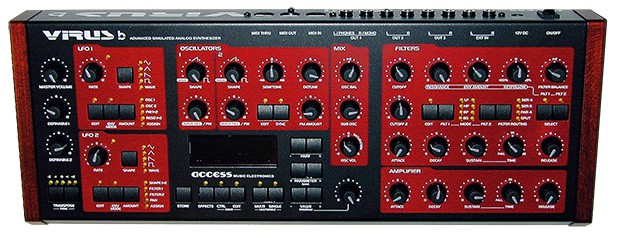
So this track I’ve been working on and off for a couple of weeks kind of took off today when I introduced a sound from my Access virus. The arpeggio on this thing really is amazing. So easy to make interesting melodies. The old Virus has more or less become my go to synths for the melodic stuff in my tunes.
My last couple of months have been pretty lacking in the inspiration section for making new music for my next album. I’ve had quite fun tinkering with the Gameboys but those chip tunes won’t really fit into the concept of the album. The last couple of times I have tried to get something done with my synths it always ends up with pretty hard techno and that’s also not the style I’m aiming for right now. Today I have spend a couple of hours trying an approach that I really should do more often. Making a beat on the Korg Volca Sample and just go from there. Now I’m done for the night but I think I actually have something that I can use as a starting point. Lets see what happens tomorrow when I listen to it again.
It being close to 20 years ago since I produced and released my debut CD album 64, I thought I should write a few words about that whole process. Technology has evolved so much during these 20 years. Even the thought of putting music on a piece of plastic seems a bit strange today..
I guess I got the idea of releasing my own CD when I met Norwegian composer and Amiga legend Bjorn Lynne while visiting The Gathering in Norway. He was selling his CDs at a table and I thought, hey I could do that as well: producing my own and market / sell it myself. I have tried for several years to get a record deal but to no avail. The cost of printing CD:s had gone down quite significantly in the mid 90s, especially if you hired a service outside of Sweden, like in Germany. I figured I could easily sell a few hundred copies to people who knew me from my days as a musician on the Commodore 64 and to other persons interested in the demo scene.
So I started to form a plan on how to get it done. I had a bunch of finished songs from around 90-93. They were all produced with the sequencer software Dr T on my Amiga 500 and a cheap Roland D-110 sound module. The music was recorded on a four track tape recorder, called a porta-studio. In the mid 90s I had bought some more synths and gear and wanted to use that to make my older tunes sound a bit less.. 80s and digital. Also the sound quality of porta-studio recordings wasn’t exactly CD-quality. I figured I would have to get hold of more hardware and re-record everything again.
In August 1996 I had saved up enough money to buy a decent PC. I got one with a good sound card, a Turtle Beach Tropez+ capable of recording one 16 bit stereo track at a time. I started to re-record all my old tracks and a few new ones made together with my friend Johan Lundin. I used the Amiga as a sequencer and recorded everything to the PC in one take, wet with effects and everything. On the PC I used Cooledit’95 for basic editing and SAW Plus for multi-track stuff and basic EQ. I didn’t really understand how a compressor worked at the time so I set the volume of all tracks individually, so they would fit together on the CD.
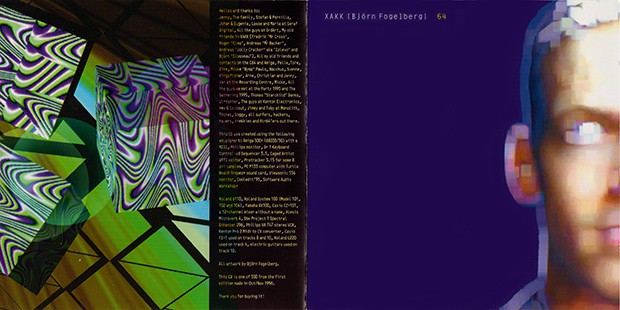
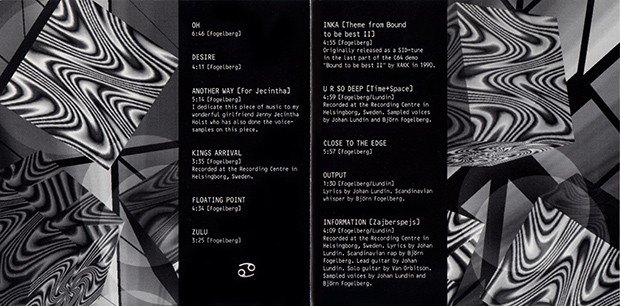
When all the tracks were finished I had to figure out how to burn everything to a CD-R that could be sent as a master to the printer in Germany. CD-burners cost A LOT back then so of course I didn’t own one. I found out about a local guy that had actually bought a burner and could make my original CD, for a price of course. Now came the problem of how to send him 650 megabytes of WAV files. In 1996 the internet was mainly accessed with modems in the range of 28 or 56 kbit/s. And of course USB sticks didn’t exist yet. Luckily we both lived in one of the first cities in Sweden with “broadband” speeds of (up to) 512 kbit/s and we were both connected to it. I set up an FTP server from which he would download the WAV-files.
When the CD master was burned it was time to make the artwork for the CD and jewel case. I worked as a printer at the time and had pretty good knowledge of what needed to be done. I think I used Corel Draw for the design. Photos and computer graphics were done on the Amiga, imported to PC and then put through some filters in Photoshop. The cover had the left side of my face, heavily blurred and the back had my right side, put through some trippy filter. If you put them next to each other you will see the whole of my face.
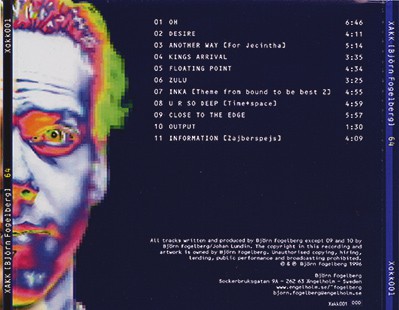
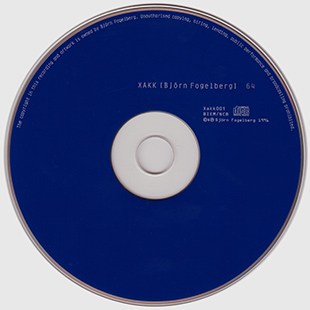
I pondered sending the finished EPS-files with the cover design on a diskette to the printers in Germany but it was actually cheaper for me to make my own CMYK-films for print and send them. A local company helped me with that and since I knew them through my work it didn’t cost me that much.
64 was printed in November 1996. Early on I had decided to only make a few hundred copies of it. Mainly because it was a niche CD and I didn’t think I could sell more than 200. Turns out I had to print at least 500 copies since that was the minimum the printers would do. Also turns out I was right. I still have around 200-250 copies of 64 left in my closet. The rest of them I sold myself at various computer parties, on BBSes and on the internet.
So that was the story about how I produced my own physical CD, then marketed and sold it on the net in 1996-1997. Let me know on my Facebook page if you have any questions.
Edit: I found my old article “How to make a CD” on Waybackmachine. It’s in Swedish and super detailed on the whole process of recording and printing CD in 1996. Could be fun to read if you are interested in the trials and tribulations of a home studio music producer in the 90s.
SoundStage: VR Music Maker is a virtual reality music sandbox built specifically for room-scale VR. I haven’t tried this but my initial reaction is.. W T F! :) Being a hardware guy I really can’t see this replacing a real studio anytime soon. Could be fun to try out though. So far I haven’t seen any obvious killer app for VR.
I think the most famous artist I remixed back in the day must have been Matt Darey and his rocktronica project Urban Astronauts. (I’m not counting Jean-Michel Jarre and Klaus Schulze as those remixes were actually covers where the artists weren’t involved in the project).
If you know your trance music history you know that Matt was one of the big names. He’s sold more than two million albums during his long career. I used to send him my tracks and he played some of them on his radio show Nocturnal. In 2008 when he was starting the Urban Astronauts project I was asked if I wanted to remix one of the tracks. I got to choose which one. A couple of weeks later Urban Astronauts – Animal (Bjorn Fogelberg Remix) was done and approved by Matt. The EP was released later that year.
https://soundcloud.com/knatter/urban-astronauts-animal-bjorn-fogelberg-remix
I’m finished with re-wiring my studio and it works great, for the most part. All my gear is now plugged into the Behringer PX3000 Ultrapatch Pro. I can very easily select which ones should connect to my sound cards, depending on what gear I want to use and record simultaneously.
Technically I could do this earlier but now it’s so much easier. The thing that works best for me when making music is that when I get an idea I want act on it immediately. Earlier it was such a hassle each time I wanted to record different hardware synths, so I tended to always stick with the same – which is a bit bad for creativity. For me anyway.
The only thing I need to solve now is to get rid of the USB noise / hiss that recently, somehow found a way into the sound from my Eurorack modules. The noise originates from the computer, via the external sound cards. I earlier had the same problems with the sound from a couple of the synths with USB (The Blofeld and the Modemachines Xoxbox) but solved it using a couple of cheap Ground loop isolators.
I tried the same approach with the sound out from the Eurorack modules. The USB noise was removed but so was also everything below 2000 Herz. I’ve ordered different isolators from Thomann. If that doesn’t work I will have to get something more expensive.
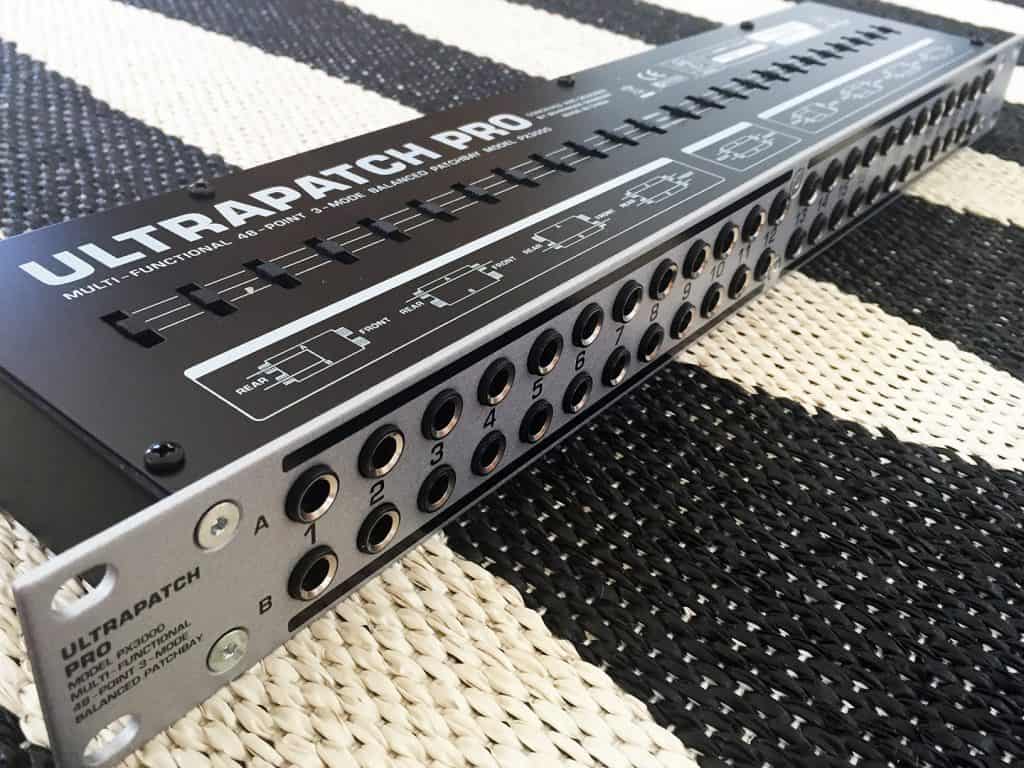
The project for today is something I should have done long ago: installing a hardware patch-bay and rewiring my studio.
Right now all of my gear goes straight into two external sound-cards, the NI Traktor Audio 6 and 10. Since there are more outputs from the gear than inputs on the sound-cards I use to switch cables when producing. After doing that for a few years you get to a point where you have no idea which cable goes where and also there is a huuuuge bundle of cables, where some of them are probably never used.
I got the Behringer PX3000 Ultrapatch Pro and 2 x The Sssnake MPP8050, which is a multicable with eight 6.3 mm mono jacks on both sides.
Wish me luck..
Over 10 years ago I got this idea that I would make some new chip tunes, so I bought an old Nintendo Gameboy and a cartridge with an early version of Nanoloop.
(Had to look, it’s version 1.2.)
No new chip tunes were actually made but I did manage to use some of its crunchy sounds in a couple of my early dance music releases, like A brand new world. The noisy crunchy loop you hear in the intro was done on a Gameboy with Nanoloop 1.2, with some sampled congas put on top of it.
Anyhow, the latest version of that awesome little sequencer is now 2.7 and apparently there is another type of cartridge on the way called Nanoloop Mono.
It’s a three channel analog synthesizer cart for the original monochrome Gameboy models, and judging by the video it sounds pretty damn good. I might just get one of these and fire up the old beige boy one more time.
Hmm.. I should make a youtube video playing Nanoloop 1.2. There doesn’t seem to be many on the tube.